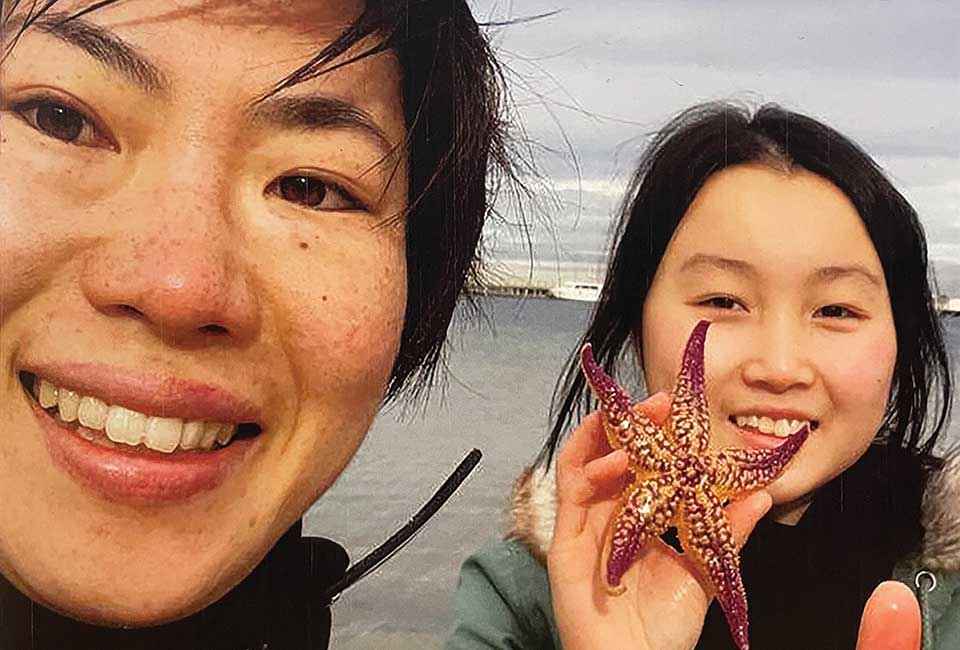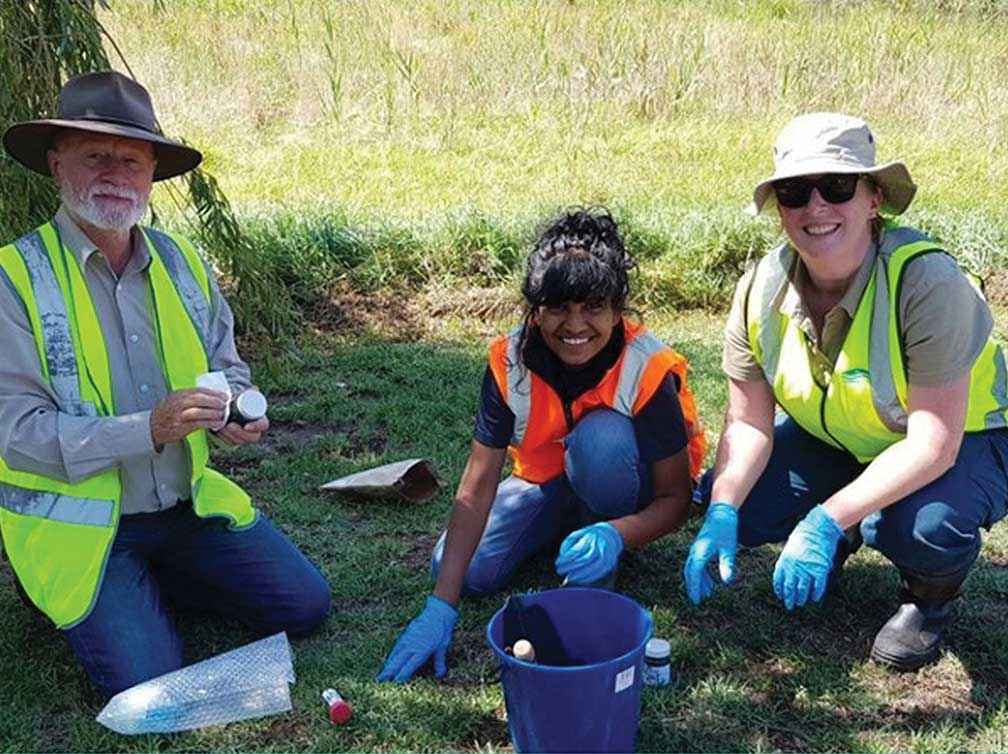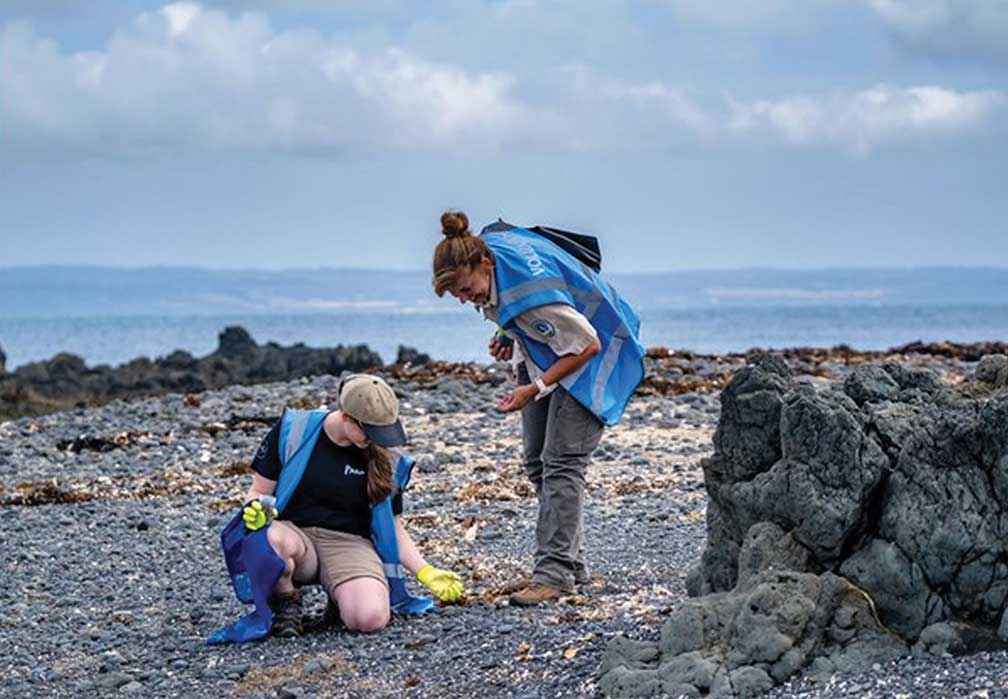Victorian Landcare Magazine - Spring 2022, Issue 85

Creating space and opportunities for young people to get active in Landcare and environmental volunteer groups is critical for the renewal and reimagination of the sector. Young people bring new voices, experiences and approaches. They can add depth and value to groups’ existing skills and ideas and provide opportunities for intergenerational knowledge sharing and learning.
The 2018 Victorians Volunteering for Nature: Environmental Volunteering Plan identified the need to support all Victorians to engage in acting for nature. It also acknowledged that environmental volunteers tend to be older than in the wider volunteering sector, and that environmental volunteer groups find it hard to recruit younger volunteers.
The plan recognised the need to create volunteering opportunities that appeal to young people, and to explore clear pathways for the employment of young people in the environment sector, such as university and workplace transition opportunities. It also identified the growing appetite for more event-based, spontaneous, and short-term opportunities.
Survey identifies a growing appetite for more event-based, spontaneous, and short-term opportunities.
In 2020 DELWP commissioned social research, including an online survey of 1000 people, to learn more about the drivers and barriers Victorians face when engaging in environmental volunteering.
One of the social research streams focused on people aged from 15 to 29, and those with culturally and linguistically diverse backgrounds who were open to the idea of doing environmental volunteering but weren’t already actively involved. The findings revealed that the strongest barrier to participation was a fear of committing to volunteering on an ongoing basis, rather than a lack of time.
Forty-five per cent of young people surveyed didn’t want to make an ongoing commitment. This highlights the importance of creating opportunities for young people to try out volunteering on a one-off, occasional, or short-term basis.
The social research also showed that messaging to attract young people has the biggest impact when it addresses people individually and emphasises the care factor for the environment.
Messaging to attract young people has the biggest impact when it addresses people individually and emphasises the care factor for the environment.

Above: Dr Kavitha Chinathamby (RMIT aquatic scientist) & citizen scientists Matt Daniels & Wendy Noble checking water samples.
Young people respond to the idea that every action can make a difference and that they can be part of the solution.
Different messaging, language and communication channels are required to encourage and attract new volunteers who have not previously been involved in environmental volunteering. Messaging needs to be tailored for the target audience, be short and sharp, use simple language, and include how participation in an activity will have tangible benefits for our environment.
Another key finding of the research was that as a sector we could be louder and more coordinated in drawing people’s attention to the need for volunteers. Among young people, 43 per cent had not really thought about getting involved.
DELWP is keen to facilitate more opportunities for youth-led and inclusive projects in the Landcare and environmental volunteering sector. This includes encouraging bold new ways of engaging them. DELWP’s approach has included partnering with peak bodies, supporting them with strategic funding, and including more young voices in the development of government policy.
In 2021 DELWP’s Environmental Volunteering Team partnered with Volunteering Victoria and the Youth Affairs Council Victoria, to develop an online Youth Ready Guide and Youth Ready Assessment tool to assist organisations with increasing participation from volunteers from their teens to twenties.
These two resources help you to check how a project may appeal to young people and provide a step-by-step approach to involving them. This includes working with young people on project design, the importance of effective messaging and how to be welcoming and inclusive.
A recent collaboration between Parks Victoria and Scouts Victoria delivered an online Into Nature Citizen Science Toolkit to engage young people and help them participate in people powered research for biodiversity as well as taking action through a targeted Big Scouting Bioblitz. The toolkit provides practical ways, tips, and templates for young citizen scientists to record observations on plant and animal species in our parks and reserves.
Parks Victoria's Youth Volunteering for Nature Fund seeks to empower Victorians aged 18 - 29 to create innovative answers to the challenges facing Victoria’s natural environment. The fund looks for young people to have their say in what innovative project ideas they can champion for environmental volunteering, that will have a positive impact on Victoria’s environment, historic and/or Aboriginal cultural heritage values, and encourage more young people to volunteer for nature.

Above: Turn the Tide volunteers at Phillip Island.
Climate change and Australia’s biodiversity crisis poses some of the biggest threats to our collective future and it is young people who will be most affected. More than ever, young people have a significant stake in protecting our natural environment and being active citizens in caring for nature.
Environmental volunteering can encourage active nature stewardship and connect young people with each other, so they understand the power of their collective voice. Being involved in on-ground environmental action is being part of the solution and it is healthy and hopeful. To get involved seek out volunteering opportunities with the Landcare and environmental volunteer groups in your local area.
Jess Marshall and John Robinson work at DELWP in the Environment and Community Programs Branch. For more information email landcare@delwp.vic.gov.au or environmental.volunteering@delwp.vic.gov.au